This site uses cookies as defined in our Cookie Policy, by continuing to use this site you agree to their use.
Continue
| Arrive | Depart | ||||||
| 22nd22 | MarMar | 202525 | Balboa (Panama City), Panama, embark on the Star Clipper | ||||
| Along the piers of Balboa, the port marking the Pacific terminus of the Panama Canal, you'll see yachts from all over the world. Balboa was built to house American administrative headquarters for the Canal and many of the buildings are handsome examples of the American colonial style of the early 1900's. | |||||||
| 23rd23 | MarMar | 202525 | At Sea | ||||
| 24th24 | MarMar | 202525 | San Blas Islands, Panama | ||||
The San Blas archipelago is located off the Caribbean coast, east of Colon, and is made up of 365 islands that range in size from tiny ones with a few coconut palms to islands on which hundreds of Kuna Indians live. Only about fifty are inhabited. The Kuna rule the San Blas Territory with internal autonomy, and have tightly preserved their language and cultural traditions over the centuries despite influences from European colonies. In addition to their own language, Spanish is widely spoken and many men work on the mainland, but live on the islands. Women wear costumes with unique designs based on local themes, geometric patterns, and stylised fauna and flora. The island of El Porvenir is one of the main seats of government for the Kuna Indians. Many Kunas from the other islands came to settle on El Porvenir, bringing with them their traditional arts and crafts, including the famous molas. These intricately hand-sewn designs are made by the women of the tribes as part of their blouses and dresses. With the increased tourism, molas are now a favoured souvenir and craft item for visitors. The vivid colors of the San Blas Islands are undoubtedly the inspiration for the fanciful birds, fish and animals in brilliant reds, oranges, blues and greens that decorate the intricately appliquéd molas created by the indigenous Kuna women. Strung along the throat of Panama's dramatically beautiful Kuna Yala coast, the remoteness of these coral atolls protects an independent people who prize their communal culture with its rich oral history and artistic heritage. | |||||||
| 25th25 | MarMar | 202525 | At Sea | ||||
| 26th26 | MarMar | 202525 | Cartagena, Colombia | ||||
Cartagena's magnificent city walls and fortresses, now a UNESCO World Heritage Site, enclose a well-restored historic center (the Cuidad Amurallada, or walled city) with plazas, churches, museums, and shops that have made it a lively coastal vacation spot for South Americans and others. New hotels and restaurants make the walled city a desirable place to stay, and the formerly down-at-the-heels Getsemaní neighborhood attracts those seeking a bohemian buzz. The historic center is a small section of Cartagena; many hotels are in the Bocagrande district, an elongated peninsula where high-rise hotels overlook a long, gray-sand beach.When it was founded in 1533 by Spanish conquistador Pedro de Heredia, Cartagena was the only port on the South American mainland. Gold and silver looted from indigenous peoples passed through here en route to Spain and attracted pirates, including Sir Francis Drake, who in 1586 torched 200 buildings. Cartagena's walls protected the city's riches as well as the New World's most important African slave market. Cartagena is a UNESCO World Heritage site. Located on the north coast of Colombia, Cartagena host a spectacular collection of buildings and massive fortifications dating from the early 1600's. The Fortresses were built to protect Cartagena from pirates. City highlights include Saint Philip of Barajas Fortresses and the Fort Ferdinand Fort. | |||||||
| 27th27 | MarMar | 202525 | Santa Marta, Colombia | ||||
| Santa Marta is the oldest city in Colombia. It's beautiful beaches are backed by the stunning mountains of the Sierra Nevada de Santa Marta Range. Tayrona National Park is a great place to explore ancient ruins amidst the lush mangrove forests. Enjoy a meal in one of the many cafes that serve meals that combine a fusion of Latin American, Caribbean and European flavours. | |||||||
| 28th28 | MarMar | 202525 | At Sea | ||||
| 29th29 | MarMar | 202525 | Oranjestad, Aruba | ||||
Aruba's capital is easily explored on foot. Its palm-lined central thoroughfare runs between old and new pastel-painted buildings of typical Dutch design (Spanish influence is also evident in some of the architecture). There are a lot of malls with boutiques and shops—the Renaissance mall carries high-end luxury items and designer fashions. A massive renovation in downtown has given Main Street (a.k.a. Caya G. F. Betico Croes) behind the Renaissance Resort a whole new lease on life: boutique malls, shops, and restaurants have opened next to well-loved family-run businesses. The pedestrian-only walkway and resting areas have unclogged the street, and the new eco-trolley is free and a great way to get around. At this writing, Linear Park was well and will showcase local merchants and artists. There will be activities along a boardwalk that will eventually run all the way to the end of Palm Beach, making it the longest of its kind in the Caribbean. Bon boni means welcome in the local dialect, Papiamento, and it's universally understood by all who visit little Aruba. Just 15 miles from Venezuela, this almost independent nation still has a ceremonial Dutch Governor General. Once it depended on oil for income, but tourism is the new king. No wonder Aruba's endless beaches and spectacular diving are too tempting to pass up. | |||||||
| 30th30 | MarMar | 202525 | Willemstad, Curaçao | ||||
Dutch settlers came here in the 1630s, about the same time they sailed through the Verazzano Narrows to Manhattan, bringing with them original red-tile roofs, first used on the trade ships as ballast and later incorporated into the architecture of Willemstad. Much of the original colonial structures remain, but this historic city is constantly reinventing itself and the government monument foundation is always busy restoring buildings in one urban neighborhood or another. The salty air causes what is called "wall cancer" which causes the ancient abodes to continually crumble over time. The city is cut in two by Santa Anna Bay. On one side is Punda (the point)—crammed with shops, restaurants, monuments, and markets and a new museum retracing its colorful history. And on the other side is Otrobanda (literally meaning the "other side"), with lots of narrow, winding streets and alleyways (called "steekjes" in Dutch), full of private homes notable for their picturesque gables and Dutch-influenced designs. In recent years the ongoing regeneration of Otrobanda has been apparent, marked by a surge in development of new hotels, restaurants, and shops; the rebirth, concentrated near the waterfront, was spearheaded by the creation of the elaborate Kura Hulanda complex.There are three ways to cross the bay: by car over the Juliana Bridge; by foot over the Queen Emma pontoon bridge (locally called "The Swinging Old Lady"); or by free ferry, which runs when the pontoon bridge is swung open for passing ships. All the major hotels outside town offer free shuttle service to town once or twice daily. Shuttles coming from the Otrobanda side leave you at Riffort. From here it's a short walk north to the foot of the pontoon bridge. Shuttles coming from the Punda side leave you near the main entrance to Ft. Amsterdam. The gabled houses and warehouses of Dutch colonial Willemstad march in tight formation along the entrance to St. Anna Bay, an incongruous vision of a tropical Amsterdam where the floating market sells mangos and papayas instead of tulips. In Curacao's interior cunucu, a few Dutch landhuis or farm owners still wrest a living by ranching on the near-desert soil. | |||||||
| 31st31 | MarMar | 202525 | Kralendijk, Bonaire | ||||
| Pink flamingoes, divi-divi trees, Papiamento and the best diving in the Caribbean - You can only be in Bonaire. The blinding white salt flats of Bonaire were once marked by tall obelisks of red, white, blue and orange (the colours of the old Dutch flag) to guide mariners. Today they are marked by clouds of pink - enormous flocks (500 or more!) of fluttering flamingoes feasting on the orange brine shrimp that gives the flamingoes their unmistakable colour. | |||||||
| 1st01 | AprApr | 202525 | At Sea | ||||
| 2nd02 | AprApr | 202525 | At Sea | ||||
| 3rd03 | AprApr | 202525 | Basseterre, Saint Kitts, Saint Kitts and Nevis | ||||
Mountainous St. Kitts, the first English settlement in the Leeward Islands, crams some stunning scenery into its 65 square miles (168 square km). Vast, brilliant green fields of sugarcane (the former cash crop, now slowly being replanted) run to the shore. The fertile, lush island has some fascinating natural and historical attractions: a rain forest replete with waterfalls, thick vines, and secret trails; a central mountain range dominated by the 3,792-foot Mt. Liamuiga, whose crater has long been dormant; and Brimstone Hill, known in the 18th century as the Gibraltar of the West Indies. St. Kitts and Nevis, along with Anguilla, achieved self-government as an associated state of Great Britain in 1967. In 1983 St. Kitts and Nevis became an independent nation. English with a strong West Indian lilt is spoken here. People are friendly but shy; always ask before you take photographs. Also, be sure to wear wraps or shorts over beach attire when you're in public places. St. Kitts' was the first successful colony in the British West Indies. Shop in colourful Basseterre, play golf and tour old plantation houses. For the adventuresome there's a brisk hike through the rainforest. | |||||||
| 3rd03 | AprApr | 202525 | South Friars Bay, Saint Kitts and Nevis | ||||
| St. Kitts' was the first successful colony in the British West Indies. Shop in colourful Basseterre, play golf and tour old plantation houses. For the adventuresome there's a brisk hike through the rainforest. | |||||||
| 4th04 | AprApr | 202525 | Gustavia, Saint Barthélemy | ||||
You can easily explore all of Gustavia during a two-hour stroll. Some shops close from noon to 3 or 4, so plan lunch accordingly, but stores stay open past 7 in the evening. Parking in Gustavia is a challenge, especially during vacation times. A good spot to park is rue de la République, alongside the catamarans, yachts, and sailboats. In its elegant little capital of Gustavia, French joie de vivre is tempered by Swedish spic and span neatness. Diversions include duty-free shopping in exquisite boutiques, beautiful beaches, excellent dining and people-watching. | |||||||
| 5th05 | AprApr | 202525 | Saint John's, Antigua and Barbuda, disembark the Star Clipper | ||||
With its superb beaches, historical attractions and beautiful coral reefs, Antigua provides a host of diversions. It is said that the island contains 365 beaches, one for every day of the year. Antigua maintains its traditional West Indian character, with gingerbread-house style architecture, calypso music and carnival festivities. St John’s has been the administrative capital since the island’s colonisation in 1632, and has been the seat of government since it gained independence in 1981. From the port you can explore the colourful Redcliffe district, with its restored wooden houses, and Heritage Quay with its shopping mall and craft shops. The city has some fine examples of Colonial architecture, including the twin-towered cathedral, built in 1845 and considered one of the finest church buildings in the Caribbean. All coaches in Antigua are operated by smaller vehicles, and commentary will be given by a driver/guide. The dockyards, marinas, old inns, venerable pubs and convivial crowds of sun-tanned yacht crews; this is the epicentre of the Caribbean yachting world. | |||||||
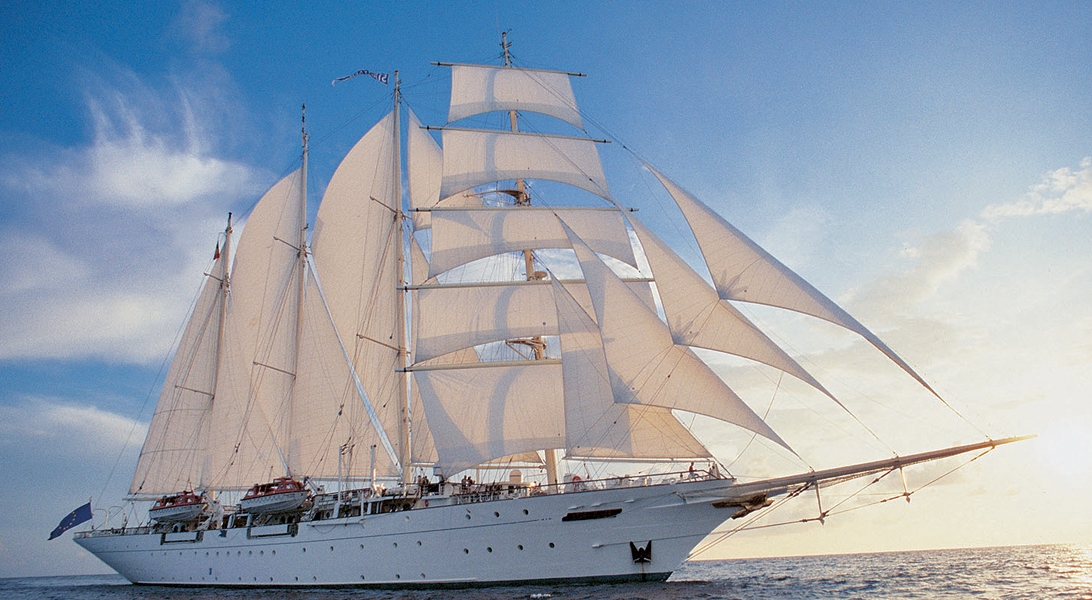




The images shown are for illustration purposes only and may not be an exact representation of what you find on the ship.
The images shown are for illustration purposes only and may not be an exact representation of what you find on the ship.

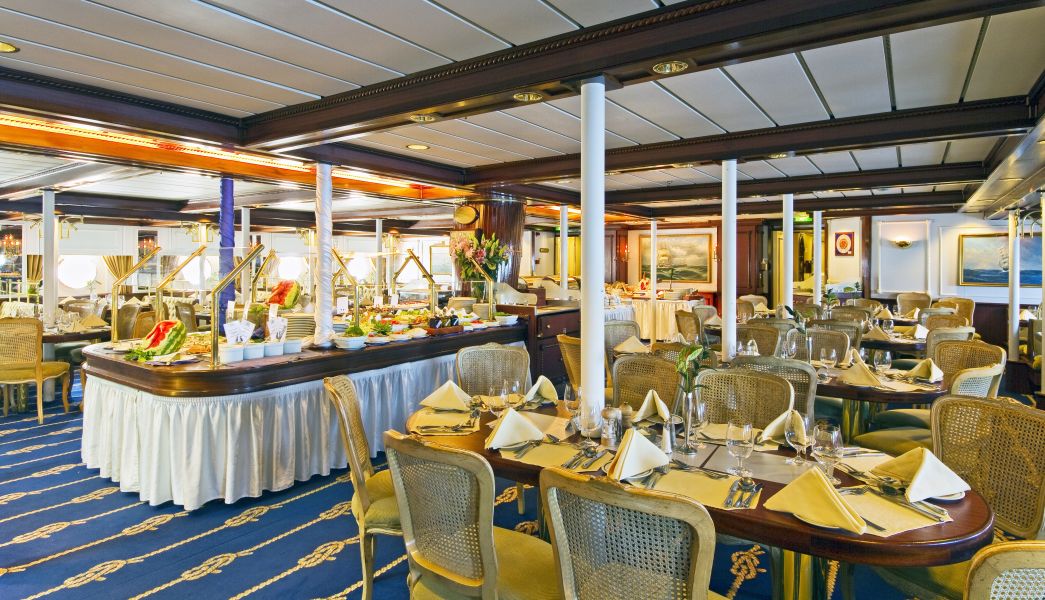
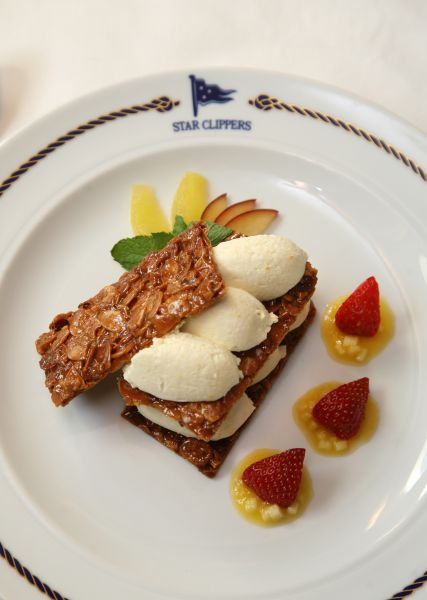
When you rise, help yourself to a continental breakfast with Parisian croissants or sweet Danish pastries. Or savour a full breakfast with fresh tropical fruit and crisp bacon, grilled sausage and omelettes cooked to order in the dining room.
At lunch, a marvellous buffet of seafood, salads and grilled favourites awaits your pleasure. If the day includes a stop at one of the paradisical islands we frequent, you might also be treated to a succulent outdoor barbecue on shore.
When evening comes, our elegantly appointed dining room becomes the setting for the chef’s finest culinary presentations, designed to please the eye and the palate, complemented by a selection of equally fine wines.
You’ll find our service to be friendly and gracious, befitting a tasteful restaurant. Of course, we would not presume to dictate your seating preferences. On all three ships, you are free to dine when and with whomever you wish - including with our officers, who join our guests in the dining room most nights. The dress code? No need for formal gowns and black tie, casual elegance is the order of the day and every single night.
The images shown are for illustration purposes only and may not be an exact representation of what you find on the ship.
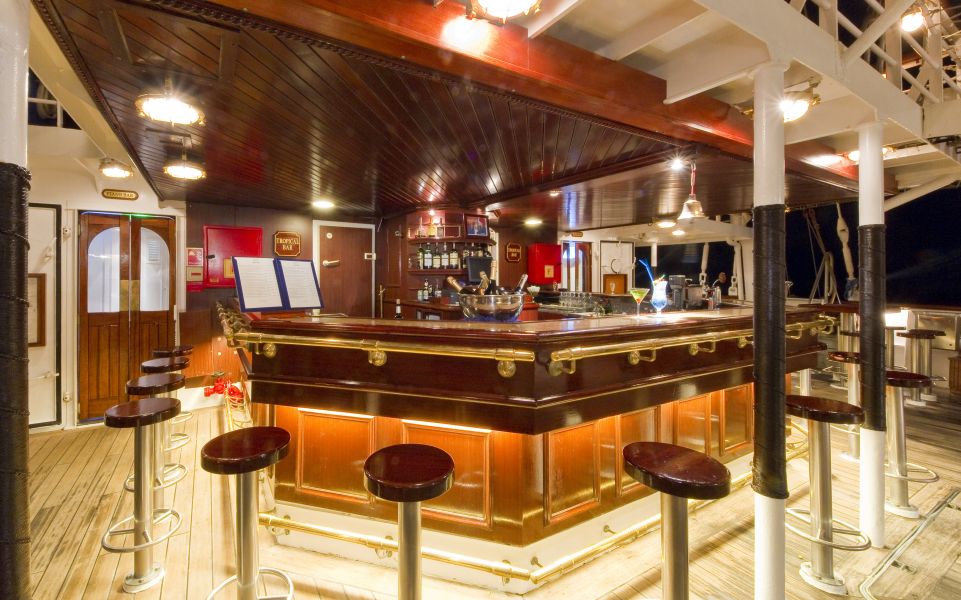

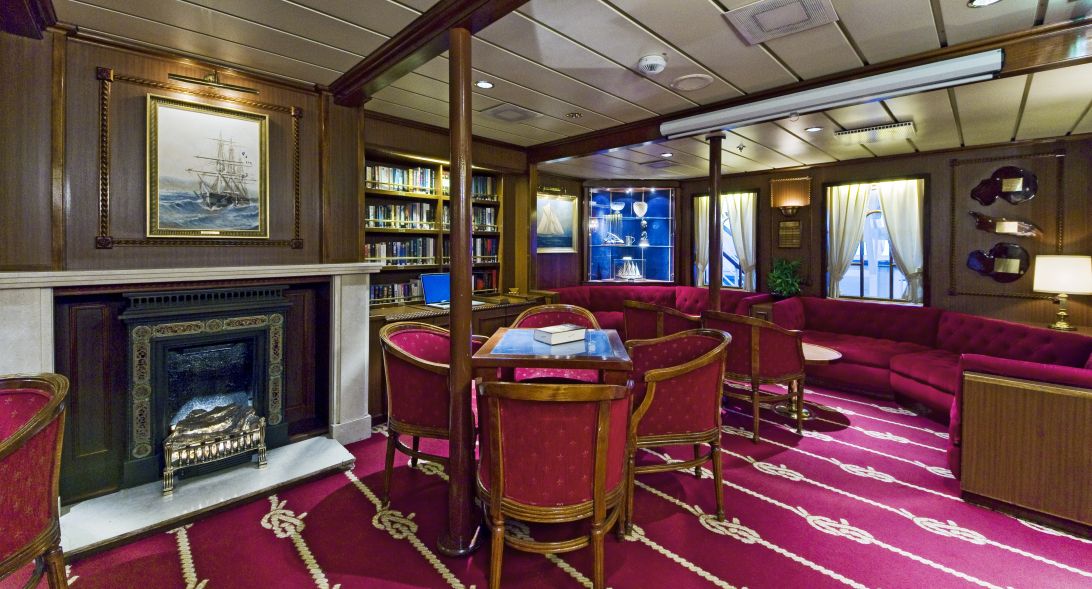
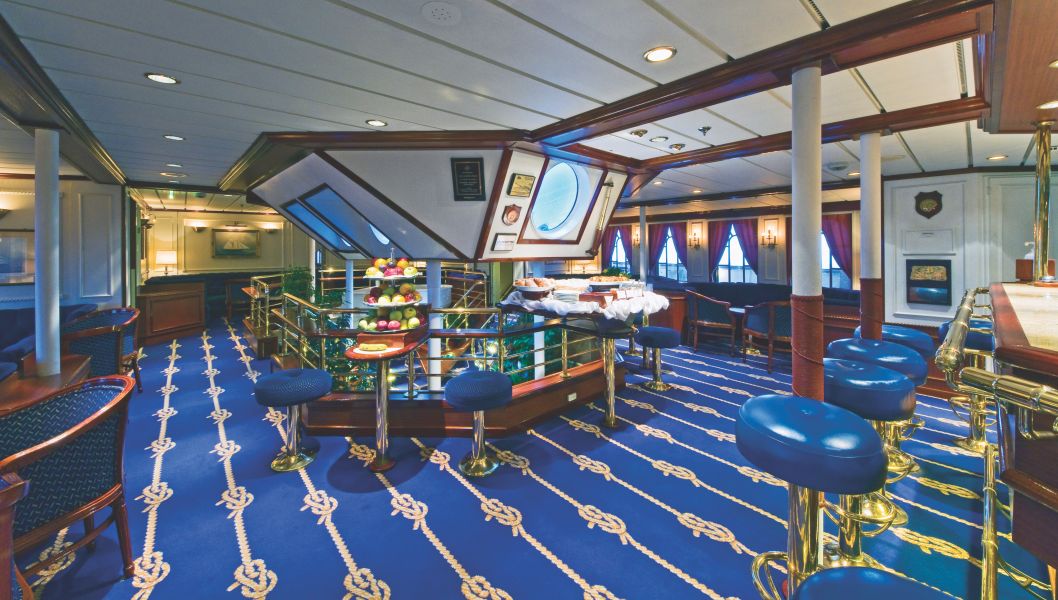
If your time isn't taken up by searching out distant lands from the crow’s nest or enjoying a lovingly prepared meal in the dining room; you can always take a seat in the Observation Lounge, find solitude in the Library, enjoy a drink in the Tropical Bar, or enjoy some live music in the Piano Bar.
The images shown are for illustration purposes only and may not be an exact representation of what you find on the ship.
The images shown are for illustration purposes only and may not be an exact representation of what you find on the ship.
| 14 nights aboard the Star Clipper | |||
| Water sports including water skiing & snorkelling | |||
| Transportation into town (available most ports) | |||
| Unique learn to sail experiences | |||
| Port Taxes and Fees | |||
 | ABTA and ATOL Protection* | ||
Date 22nd Mar 2025 |
Nts 14 |
Please call for availability |
| Interior staterooms from | £3,730pp | ||
| CAT6 | Category 6 | £3,730pp | |
| Oceanview staterooms from | £4,040pp | ||
| CAT5 | Category 5 | £4,040pp | |
| CAT4 | Category 4 | £4,360pp | |
| CAT3 | Category 3 | £4,600pp | |
| CAT2 | Category 2 | £4,830pp | |
| CAT1 | Category 1 | £5,360pp | |
| OWNC | Owners Cabin | £6,890pp | |
Fusion Cruises when selling travel arrangements is a trading name of The Midcounties Co-operative Ltd. Fusion Cruises is an Accredited Body Member of Midcounties Co-operative Travel Consortium. (ABTA:P6652, ATOL:6053).
Book with Confidence. We are a Member of ABTA which means you have the benefit of ABTA’s assistance and Code of Conduct.
Some of the flights and flight-inclusive holidays on this website are financially protected by the ATOL scheme but ATOL protection does not apply to all holiday and travel services offered on this website. This website will provide you with information on the protection that applies in the case of each holiday and travel service offered before you make your booking. If you do not receive an ATOL Certificate then the booking will not be ATOL protected. If you do receive an ATOL Certificate but all parts of your trip are not listed on it, those parts will not be ATOL protected. Please see our booking conditions for information, or for more information about financial protection and the ATOL Certificate go to: www.caa.co.uk
